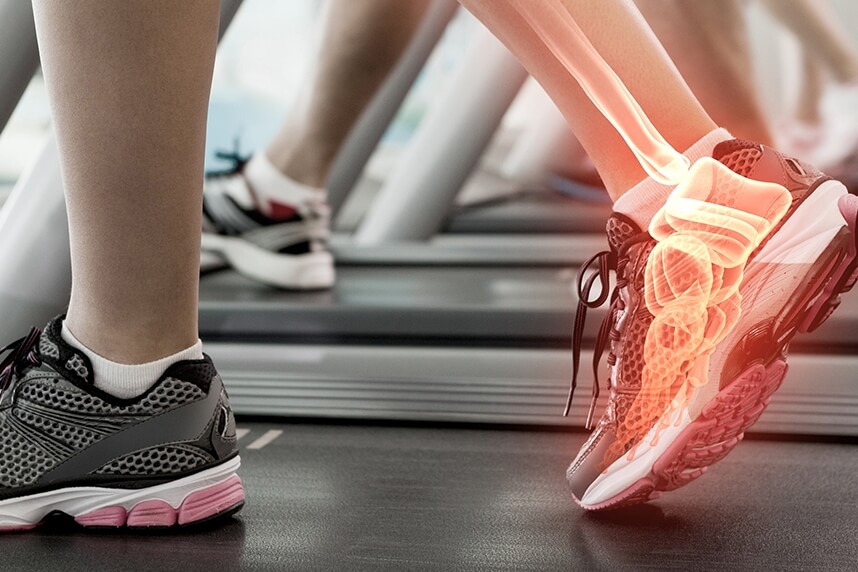
Discover the open MRI imaging center in our clinic. Centrokinetic has a state-of-the-art MRI machine, dedicated to musculoskeletal conditions, in the upper and lower limbs. The MRI machine is open so that people suffering from claustrophobia can do this investigation. The examination duration is, on average, 20 minutes.
Centrokinetic attaches great importance to the entire medical act: investigations necessary for correct diagnosis (ultrasound, MRI), surgery, and postoperative recovery.
Arthroscopic ankle arthrodesis is indicated in advanced arthrosis of the ankle. The ideal intervention is the one that has a chance of success of almost 100% on the first possible attempt (90-95% in the case of arthroscopic fusion of the ankle) and allows the patient to recover as quickly as possible. It should also have a low level of postoperative pain.
.jpg)
This description serves to illustrate the main advantages of arthroscopic arthrodesis of the ankle, which leads to a faster recovery time in conditions of very small postoperative pain.
The intervention is performed using standard two small incisions for arthroscopy, as well as two other small incisions to place the two screws needed for fixation (usually in the medial part of the ankle).
.png)
Surgical technique
The patient receives a spinal (spinal) anesthesia and is placed on his back on the operating table. Subsequently, a hemostatic band is mounted on the affected limb to stop the bleeding during the intervention.
The intervention involves making two incisions of about 4mm in the medial and lateral area, and the introduction of an optical camera 2.8 or 4mm thick to inspect the affected joint. All the remaining articular cartilage is removed and the articular surfaces are regularized so that the contact between the two bones (tibia and talus) is as high as possible. Subsequently, two more incisions of about 5 mm are made in the medial area of the ankle (or one medial and one lateral), and under radiological supervision, the affected joint is fixed with 2-3 titanium screws, 5 mm thick, compacting (approaching) the two bone surfaces.
.png)
The use of the arthroscopic technique of arthrodesis of the ankle also means that most patients avoid the complications given by a classic intervention: incision of about 12-14 cm, pain, risks of infection, to damage local anatomical formations.
Low pain and high mobility mean that most patients require a single postoperative day in the hospital.
The most important difference is the chance of a successful ankle fusion. With the arthroscopic technique, there is a success between 90-97%. At best, with the option open, we can expect a primary fusion rate of 80-90% (this means the chance that the fusion will take place after the first operation).
Postoperatively
After the intervention, the patient remains hospitalized for 1-2 days. He will receive pain medication and antibiotics during his hospitalization. The operated limb is partially immobilized in a very light fiber splint, for 8 weeks. Free walking is not allowed in the first 6 weeks postoperatively, you must use crutches.
At home
Although recovery from an arthroscopic ankle arthrodesis is much faster than a classic operation, it will still take a few months for you to fully recover after the intervention. You should expect pain and discomfort for at least a week postoperatively. Ice will reduce pain and inflammation.
You must be careful not to lean on the operated ankle in the first weeks because the pain and discomfort can worsen. You can take a bath, but without wetting the bandage and incisions. The threads are suppressed at 14 days postoperatively.
After 6 weeks, a radiological examination is made and if the results are good, the patient can begin to step easily on the operated limb. However, the patient will give up crutches after a minimum of 10 weeks, but in some cases, the prognosis is 12 weeks.
.jpg)
It is very important to follow the recovery program strictly and seriously for the surgery to be a success. Our medical team works on average with the patient after this intervention, 18-24 weeks until complete recovery of the operated area.
Following any surgery, medical recovery plays an essential role in the social, professional, and family reintegration of the patient. Because we pursue the optimal outcome for each patient entering the clinic, recovery medicine from Centrokinetic is based on a team of experienced physicians and physical therapists and standardized medical protocols.

MAKE AN APPOINTMENT
CONTACT US
MAKE AN APPOINTMENT
FOR AN EXAMINATION
See here how you can make an appointment and the location of our clinics.
MAKE AN APPOINTMENT

































































































































